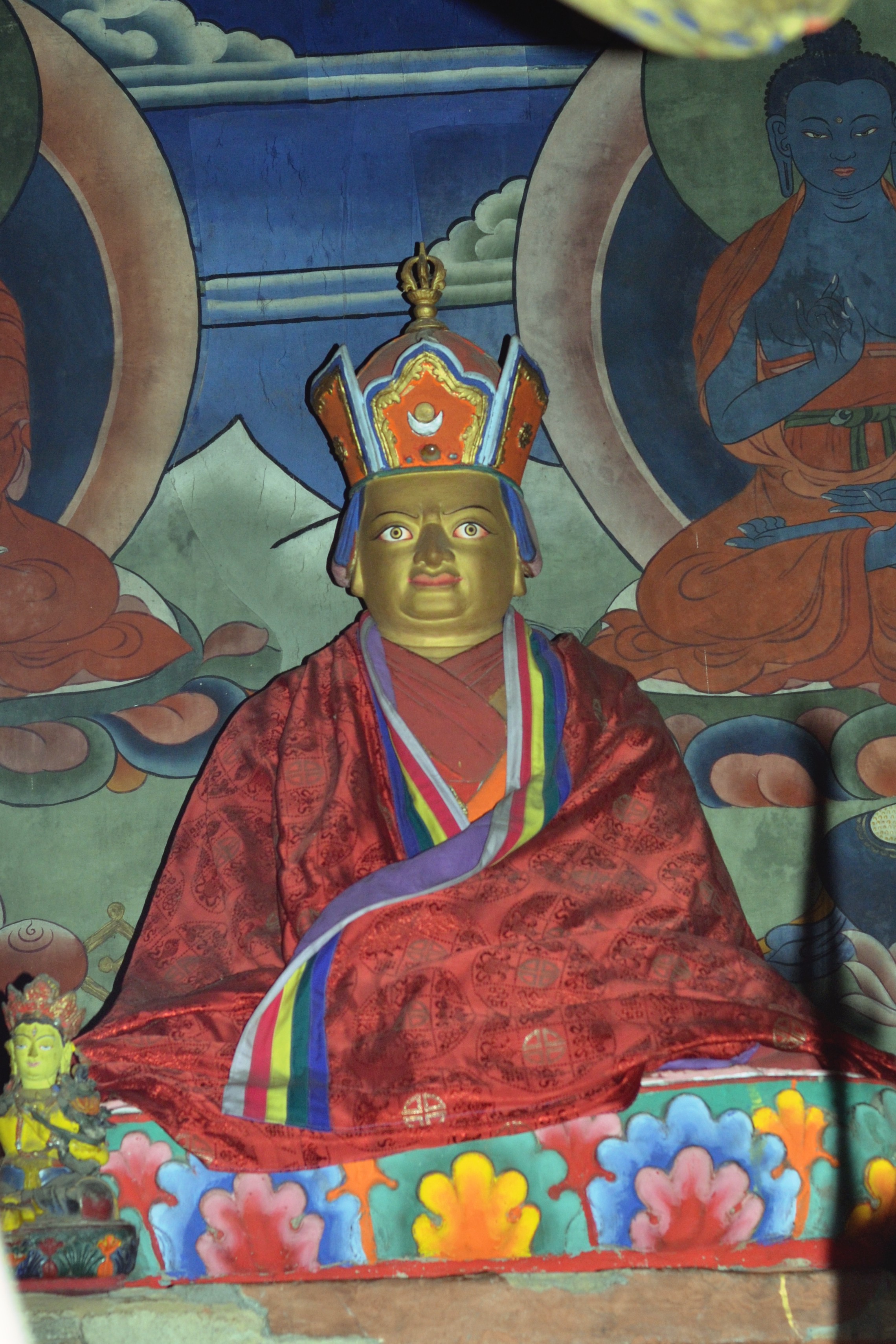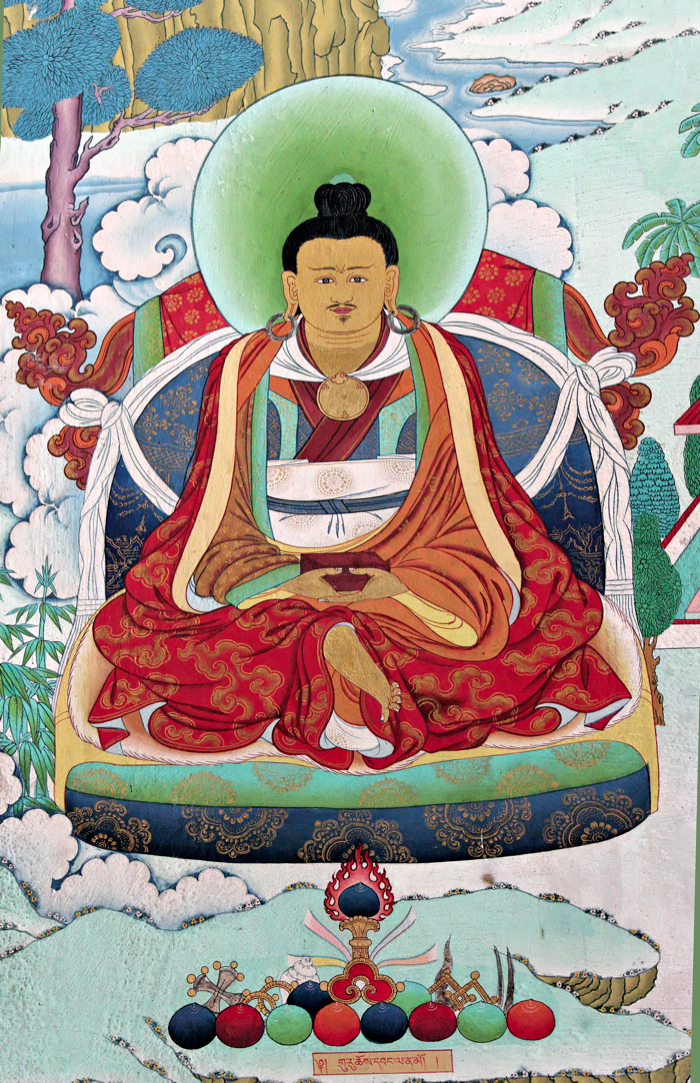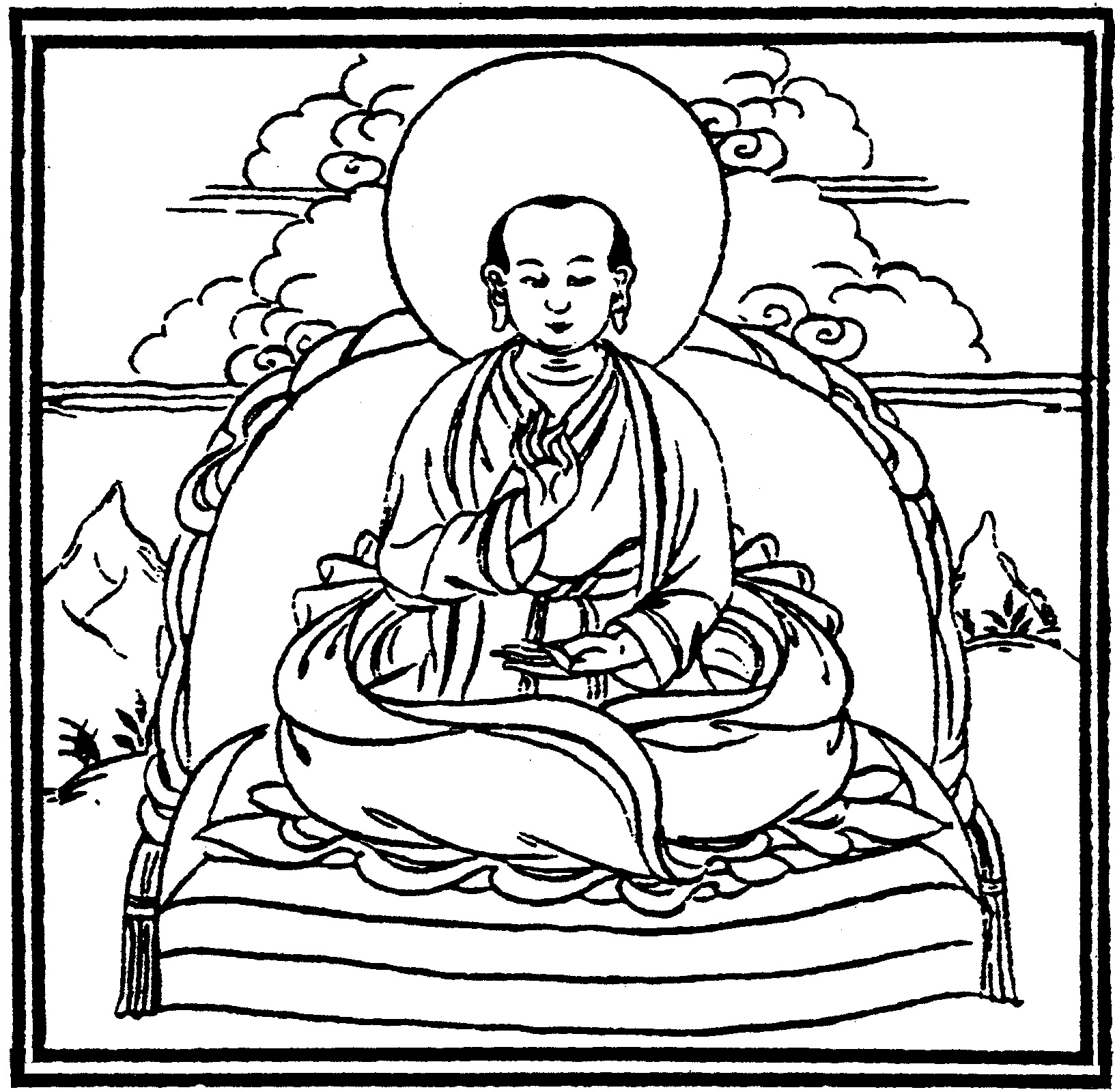|
Tertön
Tertön () is a term within Tibetan Buddhism meaning a person who is a discoverer of ancient hidden texts or '' terma''. Many tertöns are considered to be incarnations of the twenty five main disciples of Padmasambhava ( Guru Rinpoche), who foresaw a dark time in Tibet. He and his consort Yeshe Tsogyal hid teachings to be found in the future to benefit beings. A vast system of transmission lineages developed. Scriptures from the Nyingma school were updated by terma discoveries, and terma teachings have guided many Tibetan Bon and Buddhist practitioners. The Termas are sometimes objects like statues, and can also exist as dharma texts and experiences. Tertöns discover the texts at the right time and place. The teachings can be relatively simple transmissions as well as entire meditation systems. Termas are found in rocks, water and the minds of incarnations of Guru Rinpoche's students. Prominent Nyingma tertöns According to generally accepted history, the rediscovering of ter ... [...More Info...] [...Related Items...] OR: [Wikipedia] [Google] [Baidu] |
Tare Lhamo
Tāre Lhamo, Tāre Dechen Gyalmo ( Earth Tiger Year 1938–2002), was a Tibetan Buddhist master, visionary, and treasure revealer ( ''gter ston'') who gained renown in eastern Tibet. She was especially praised for her life-saving miracles during the hardships of the Cultural Revolution and for extending the life-span of many masters. It was said that her activities to benefit others swelled like a lake in spring. At age 40, Tāre Lhamo became the wisdom consort of Namtrul Rinpoche Jigme Phuntsok, aka Orgyen Namkha Lingpa (1944–2011), the Fourth Namkai Nyingpo and the rebirth of her father, Apang Terchen. The eminent couple worked tirelessly to restore and expand religious study and practice in their communities. Their home base was Nyenlung in Serta County, Sichuan, close to Dodrupchen and Larung Gar. Tare Lhamo discovered many Secret Mantra and Dzogchen Dharma treasures (''gter chos''), including sadhanas, songs of birds, and songs of realization. Together with Namtrul Rinpoc ... [...More Info...] [...Related Items...] OR: [Wikipedia] [Google] [Baidu] |
Terma (religion)
Terma (; "hidden treasure") are various forms of hidden teachings that are key to Vajrayana and Tibetan Buddhist and Bon spiritual traditions. In the Vajrayana Nyingma school tradition, two lineages occur: an oral '' kama'' lineage and a revealed ''terma'' lineage. Tradition holds that ''terma'' teachings were originally esoterically hidden by eighth-century Vajrayana masters Padmasambhava and Yeshe Tsogyal, to be discovered at auspicious times by treasure revealers known as tertöns. As such, terma represent a tradition of continuous revelation in Vajrayana and Tibetan Buddhism. Tradition Tradition holds that terma may be a physical object such as a text or ritual implement that is buried in the ground, hidden in a rock or crystal, secreted in a herb, or a tree, hidden in water, or hidden in the sky or in space. Though a literal understanding of ''terma'' is "hidden treasure", and sometimes refers to objects that are hidden away, the teachings associated should be understood as ... [...More Info...] [...Related Items...] OR: [Wikipedia] [Google] [Baidu] |
Pema Lingpa
Pema Lingpa or Padma Lingpa (, 1450–1521) was a Bhutanese saint and siddha of the Nyingma school of Tibetan Buddhism. He is considered a ''terchen'' or "preeminent tertön" (, discoverer of spiritual treasures) and is considered to be foremost of the "Five Tertön Kings" (). In the history of the Nyingma school in Bhutan, Pema Lingpa is second only in importance to Padmasambhava. Biography Pema Lingpa was born in Chel presently called Baribrang in Tang valley of Bumthang, part of the central Bhutanese region of Bumthang known as the “Wheel of Dharma.” His father was Lama Döndrup Zangpo of the Nyö clan, and his mother, Drogmo Pema Drolma, was bestowed with all the signs of a dakini. Their son was born among many miraculous signs. As an incarnation of the Omniscient One Drimé Ozer (Longchenpa), Pema Lingpa was extraordinary even as a child. He learned everything from reading and writing to ironwork and carpentry without receiving any instruction. On the tenth day of t ... [...More Info...] [...Related Items...] OR: [Wikipedia] [Google] [Baidu] |
Ayu Khandro
Ayu Khandro (Long Life Dakini), also known as Dorje Paldrön, lived from 1839 to 1953. She was a practitioner, yogini, and terton of Tibetan Buddhism in Eastern Tibet. An accomplished Dzogchen meditator, she is renowned for her extensive pilgrimages throughout Tibet, long periods of dark retreat practice, the gongtera directly revealed text, terma, in the mind of the practitioner of the practice of the yidam Senge Dongma (the Lion-Faced Dakini), various forms of Chöd, and her lifelong dedication to spiritual practice. The information we have about Ayu Khandro comes from the oral commentary that she personally gave to Chogyal Namkhai Norbu in Dzongsa, 1951. He wrote her namthar, or spiritual biography, which was later published in ''Women of Wisdom'' by Tsultrim Allione. Ayu Khandro met, and was taught by, many great masters of her day ; Jamyang Khyentse Wangpo, Jamgon Kongtrul the First, Chokgyur Lingpa, Nyala Pema Dündul, Adzom Drukpa, Togden Rangrig and the ninth T ... [...More Info...] [...Related Items...] OR: [Wikipedia] [Google] [Baidu] |
Zhangton Tashi Dorje
Zhangtön Tashi Dorjé (Wylie transliteration, Wylie: ''zhang ston bkra shis rdo rje'', c. 1097 – 1167) was a Tibetan Buddhist Dzogchen teacher who was an important treasure revealer (Tertön, terton) in the Menngagde lineage of Dzogchen. He is particularly known for revealing the ''Vima Nyingtik, Vima Nyingthig'', a key Dzogchen cycle of teachings which includes the Seventeen tantras, Seventeen tantras of Dzogchen.Germano, David; Gyatso, Janet (2001), "Longchenpa and the Possession of the Dakinis", in White, David Gordon (ed.), Tantra in Practice, Motilal Banarsidass Publ.Hatchell, Christopher (2014), ''Naked Seeing The Great Perfection, the Wheel of Time, and Visionary Buddhism in Renaissance Tibet'', p. 54. Oxford University Press Zhangton was born in Yamdrok Tonang and was a disciple of Chetsün Sengé Wangchuk. Traditional Nyingma histories hold that Zhangton had visions of Vimalamitra and discovered the ''Vima Nyingthig'' as a hidden treasure (Terma (religion), terma) in Ch ... [...More Info...] [...Related Items...] OR: [Wikipedia] [Google] [Baidu] |
Jamyang Khyentse Wangpo
Jamyang Khyentse Wangpo (, 1820–1892), also known by his tertön title, Pema Ösel Dongak Lingpa, was a renowned teacher, scholar and tertön of 19th-century Tibet. He was a leading figure in the Rimé movement. Having seen how the Gelug institutions pushed the other traditions into the corners of Tibet's cultural life, Jamyang Khyentse Wangpo and Jamgön Kongtrül Lodrö Thayé compiled together the teachings of the Sakya, Kagyu and Nyingma, including many near-extinct teachings, thus creating the Rimé movement. Without their collection and printing of rare works, the suppression of Buddhism by the Communists would have been much more final. Biography Jamyang Khyentse Wangpo was born in 1820 on the 5th day of the 6th month of the Iron Dragon year of the 14th Rabjung, in the region of Yaru Khyungchen Drak in the village of Taerlung in Derge, Kham. His father was Rinchen Namgyal, the secretary of the king of Derge belonging to the Nyö clan, and a descendant of Drikung Chan ... [...More Info...] [...Related Items...] OR: [Wikipedia] [Google] [Baidu] |
Karma Lingpa
Karma Lingpa (1326–1386) was the tertön (revealer) of the Bardo Thodol, the so-called ''Tibetan Book of the Dead''. Tradition holds that he was a reincarnation of Chokro Lü Gyeltsen, a disciple of Padmasambhava. History Karma Lingpa was born in southeast Tibet as the eldest son of Nyida Sanggyé, a great Vajrayana practitioner. At an early age, Karma Lingpa engaged in esoteric practices and achieved many siddhi. When he was fifteen years old, he discovered several terma texts on top of Mount Gampodar, including a collection of teachings entitled "Profound Dharma of Self-Liberation through the Intention of the Peaceful and Wrathful Ones" (''zab-chos zhi khro dgongs pa rang grol'', also known as ''kar-gling zhi-khro''), which includes the two texts of '' bar-do thos-grol'', the so-called "Tibetan Book of the Dead". According to Chogyam Trungpa, Karma Lingpa was a Nyingma teacher, but all of his students belonged to the Kagyu school. His teachings were transmitted in the ... [...More Info...] [...Related Items...] OR: [Wikipedia] [Google] [Baidu] |
Nyangrel Nyima Özer
Nyangrel Nyima Özer (''Nyang ral nyi ma 'od zer, c.'' 1124–1192) was an important Nyingma tertön, a revealer of Terma (religion), terma treasure texts in Tibetan Buddhism. Overview Nyima Özer was considered to be a reincarnation of Trisong Detsen, King Trisong Detsen. He was a lay yogi and had two sons: Nam mkha’ ‘od zer and Nam’mkha’ dpal ba (who was also his main disciple and heir).Biography Of Nyang ral nyi ma 'od zer ''from the Tibetan Renaissance Seminar,'' UVACollab, The University of Virginia. Nyang Ral Nyima Özer had several teachers, in particular, he studied with his father - the great master Nyangtona. His teachers were Gyanonpa Tondo, Zhikpo Nyima Senge, Mel and Kavachepa Tonpa Khache. Guru Chowang (Gu ru chos kyi dbang phyug, 1 ... [...More Info...] [...Related Items...] OR: [Wikipedia] [Google] [Baidu] |
Rigdzin Gödem
Rigdzin Gödem ( Tib. རིག་འཛིན་རྒོད་ལྡེམ།, ''rig 'dzin rgod ldem,'' 1337–1409)''.'' also known as Rigdzin Gokyi Demtru Chen and Ngodrub Gyaltsen, was a major Nyingma tertön (a revealer of treasure texts in Tibetan Buddhism). He revealed an important cycle of termas called the "Northern Treasures" or ''byanggter'' (because they were found north of the Yarlung Valley). His revelation include the important ''Pellucid Transcendent State of Samantabhadra'' (''Kun tu bzang po’i dgongs pa zang thal''), commonly known as the ''Gongpa Zangthal.''Katarina Turpeinen, ''“Luminous visions and liberatory amulets in Rig ’dzin rGod ldem’s Great Perfection anthology”'', Revue d’Etudes Tibétaines, no. 50, June 2019, pp. 132-149 The ''Gongpa Zangthal'' was revealed in 1366 in the Tsang province and contains teachings on tantra and Dzogchen. Gödem's revelations also include the famous ''Prayer of Samantabhadra'' (''Kun bzang smon lam''). Accordi ... [...More Info...] [...Related Items...] OR: [Wikipedia] [Google] [Baidu] |
Guru Rinpoche
Padmasambhava ("Born from a Lotus"), also known as Guru Rinpoche (Precious Guru) and the Lotus from Oḍḍiyāna, was a tantric Buddhist Vajra master from India who may have taught Vajrayana in Tibet (circa 8th – 9th centuries)... According to some early Tibetan sources like the '' Testament of Ba'', he came to Tibet in the 8th century and helped construct Samye Monastery, the first Buddhist monastery in Tibet. However, little is known about the actual historical figure other than his ties to Vajrayana and Indian Buddhism. Padmasambhava later came to be viewed as a central figure in the transmission of Buddhism to Tibet. Starting from around the 12th century, hagiographies concerning Padmasambhava were written. These works expanded the profile and activities of Padmasambhava, now seen as taming all the Tibetan spirits and gods, and concealing various secret texts ('' terma'') for future tertöns. Nyangral Nyima Özer (1124–1192) was the author of the ''Zangling-ma'' (Jewe ... [...More Info...] [...Related Items...] OR: [Wikipedia] [Google] [Baidu] |
Padmasambhava
Padmasambhava ("Born from a Lotus"), also known as Guru Rinpoche (Precious Guru) and the Lotus from Oḍḍiyāna, was a tantric Buddhist Vajra master from India who may have taught Vajrayana in Tibet (circa 8th – 9th centuries)... According to some early Tibetan sources like the ''Testament of Ba'', he came to Tibet in the 8th century and helped construct Samye Monastery, the first Buddhist monastery in Tibet. However, little is known about the actual historical figure other than his ties to Vajrayana and Indian Buddhism. Padmasambhava later came to be viewed as a central figure in the transmission of Buddhism to Tibet. Starting from around the 12th century, hagiographies concerning Padmasambhava were written. These works expanded the profile and activities of Padmasambhava, now seen as taming all the Tibetan spirits and gods, and concealing various secret texts ('' terma'') for future tertöns. Nyangral Nyima Özer (1124–1192) was the author of the ''Zangling-ma'' (Jew ... [...More Info...] [...Related Items...] OR: [Wikipedia] [Google] [Baidu] |
Tibetan Buddhism
Tibetan Buddhism (also referred to as Indo-Tibetan Buddhism, Lamaism, Lamaistic Buddhism, Himalayan Buddhism, and Northern Buddhism) is the form of Buddhism practiced in Tibet and Bhutan, where it is the dominant religion. It is also in majority regions surrounding the Himalayan areas of India (such as Ladakh, Sikkim, Arunachal Pradesh, and a minority in Himachal Pradesh and Uttarakhand), in much of Central Asia, in the southern Siberian regions such as Tuva, and in Mongolia. Tibetan Buddhism evolved as a form of Mahāyāna Buddhism stemming from the latest stages of Indian Buddhism (which also included many Vajrayāna elements). It thus preserves many Indian Buddhist tantric practices of the post-Gupta early medieval period (500 to 1200 CE), along with numerous native Tibetan developments. In the pre-modern era, Tibetan Buddhism spread outside of Tibet primarily due to the influence of the Mongol Yuan dynasty (1271–1368), founded by Kublai Khan, which had ruled Chin ... [...More Info...] [...Related Items...] OR: [Wikipedia] [Google] [Baidu] |






.jpg)
.jpeg/1200px-Tibetan_Buddhism_(214837929).jpeg)